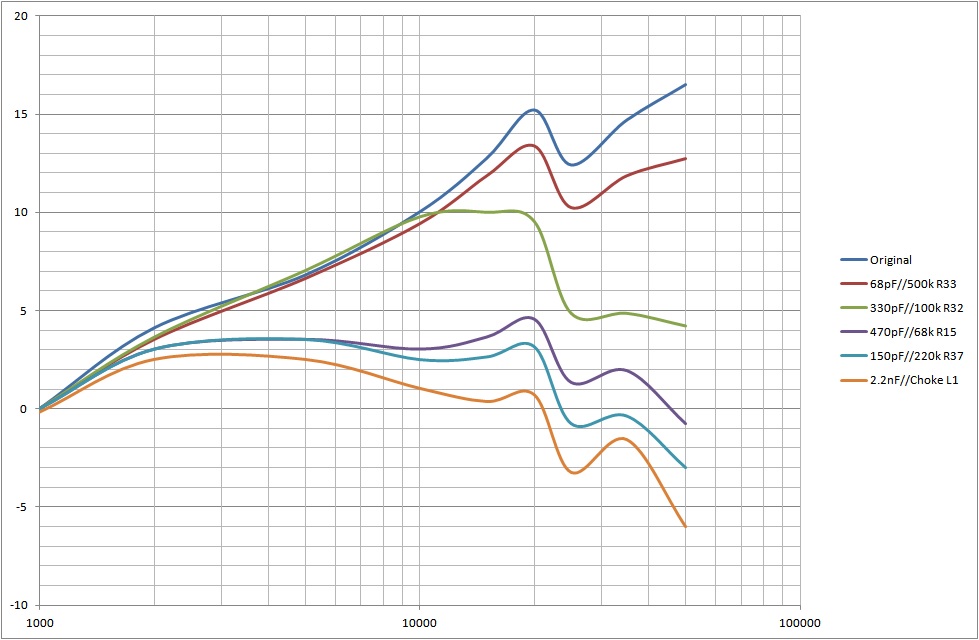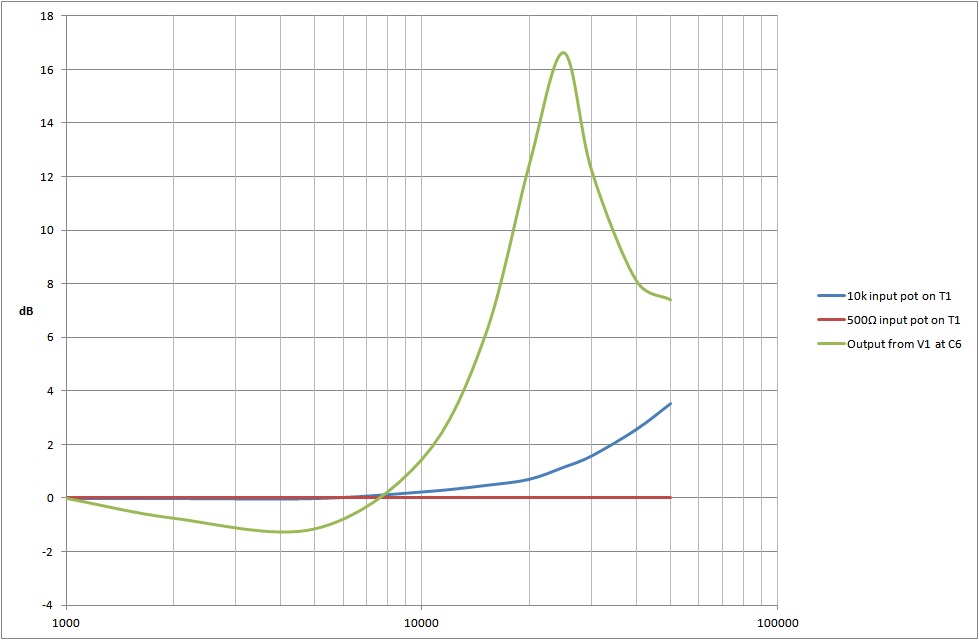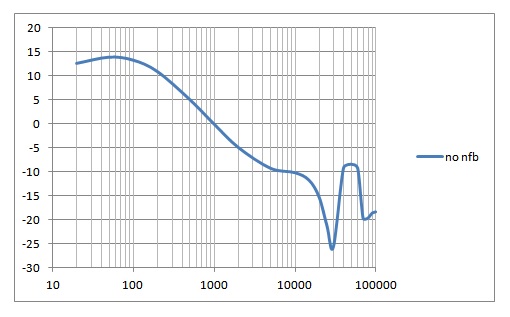After testing the frequency response of the whole equaliser, the 4.4nF cap was removed because it gave too much top-end. My conclusion is that the overall circuit has a rising high frequency response which the output stage needs to reduce to get back to a flat overall response.
I have attached my final schematics. While I have been using the 627, I noticed that it uses quite low input levels due to the IPT ratio and V1's operating range. I also had to be careful about levels when testing the boost; if you don't allow for the increase in level then you can end up with distortion. There can also be a distortion problem if the level is too low, the boost circuits are a complicated feedback circuit and I noticed 20Hz distortion if there was not enough NFB. I still have some charts to produce before I sign-off the project and I will give some suggestions about maximum and minimum input and output levels as well.
Best
DaveP
I have attached my final schematics. While I have been using the 627, I noticed that it uses quite low input levels due to the IPT ratio and V1's operating range. I also had to be careful about levels when testing the boost; if you don't allow for the increase in level then you can end up with distortion. There can also be a distortion problem if the level is too low, the boost circuits are a complicated feedback circuit and I noticed 20Hz distortion if there was not enough NFB. I still have some charts to produce before I sign-off the project and I will give some suggestions about maximum and minimum input and output levels as well.
Best
DaveP






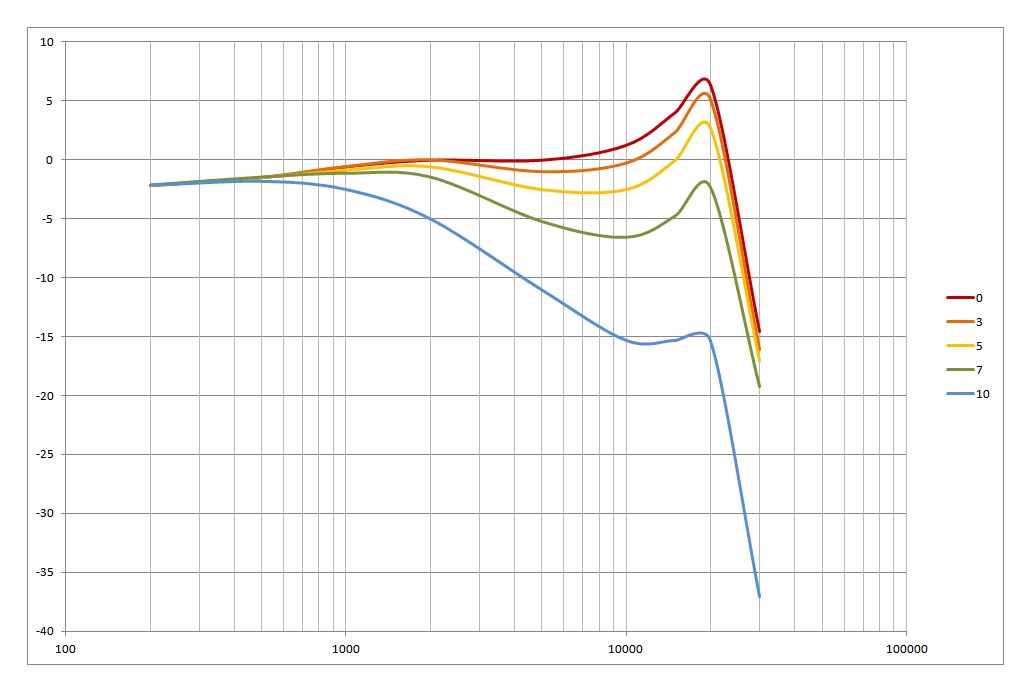
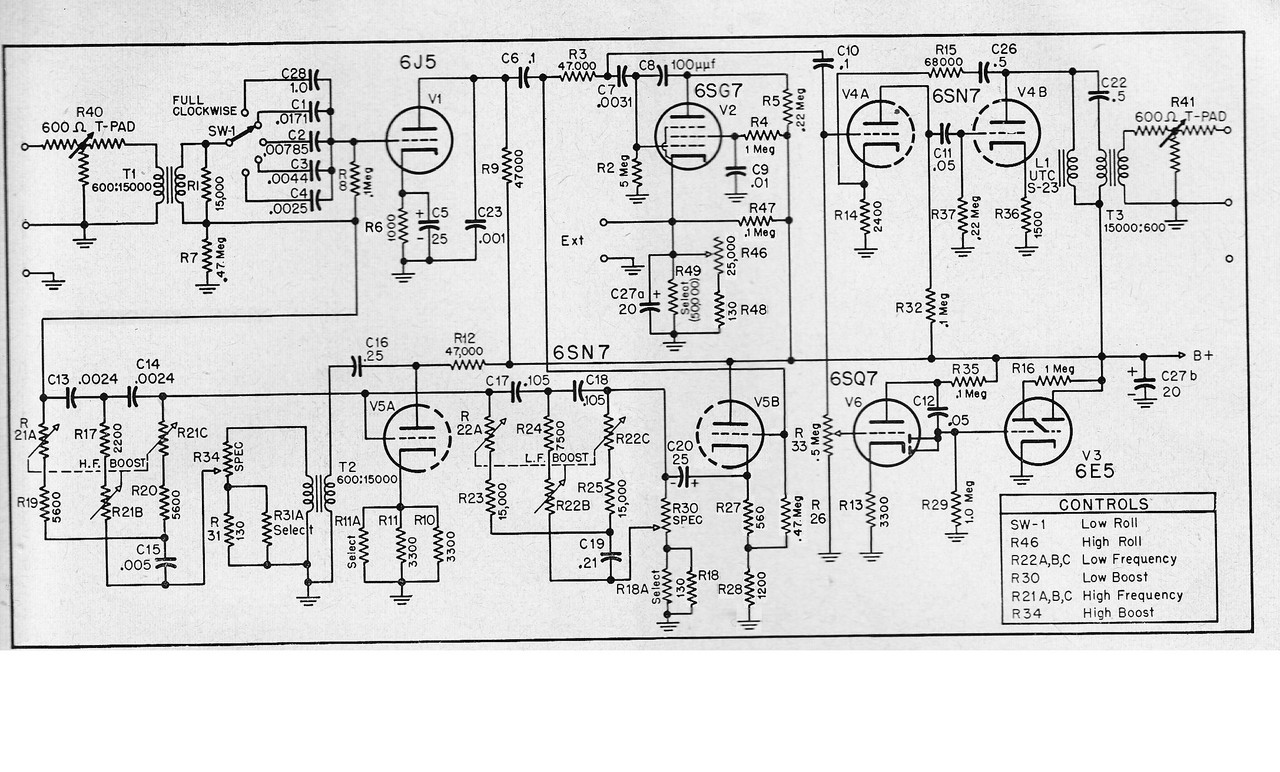




![Soldering Iron Kit, 120W LED Digital Advanced Solder Iron Soldering Gun kit, 110V Welding Tools, Smart Temperature Control [356℉-932℉], Extra 5pcs Tips, Auto Sleep, Temp Calibration, Orange](https://m.media-amazon.com/images/I/51sFKu9SdeL._SL500_.jpg)

























